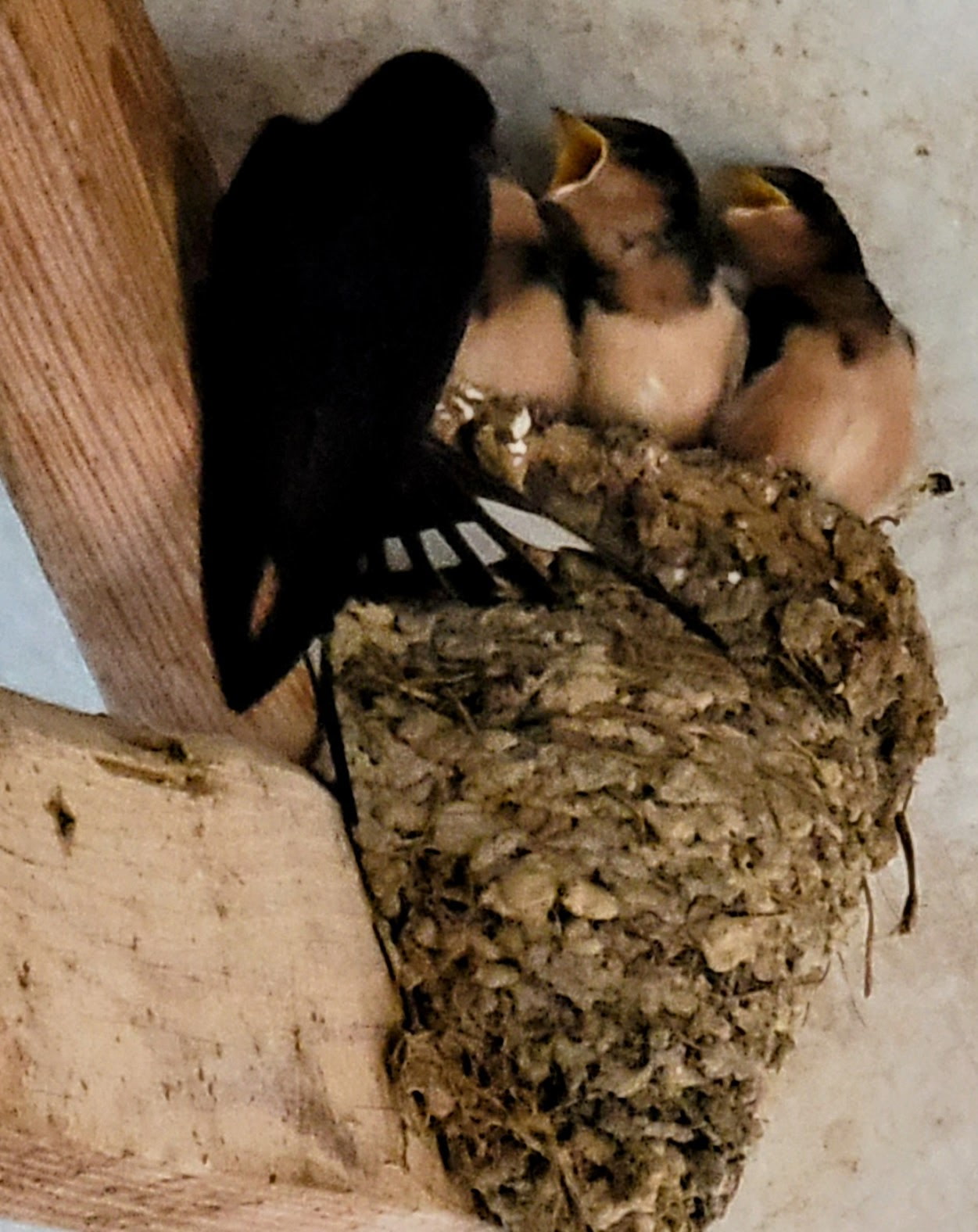When my wife, Woody, and I bought our farm, we didn't fully grasp the relationship with nature we were about to develop or how our respect for natural processes would deepen. We've since learned that humans thrive best when cooperating with, rather than trying to dominate, the natural world.
The first spring after purchasing our farm, we noticed several bird nests being built under our front porch and roof overhang. Made from mud, straw, twigs, and other materials, the nests initially appeared crude and unsightly. However, once we identified these birds as barn swallows, we decided to leave them undisturbed. This decision rewarded us richly with both entertainment and effective pest control.
The original four or five nests have grown into more than thirty, as barn swallows return annually to their birthplaces after wintering as far south as Central America. This migration ensures a growing population as new generations mature and start families. Our swallow population notably spiked after constructing our main barn, which offers an ideal nesting environment due to its high ceiling and reflective insulation beneath the metal roof—conditions similar to the caves swallows originally favored.

Barn swallows, measuring 6 to 7.5 inches in length and weighing slightly more than half an ounce, are small yet incredibly agile in flight. Watching their aerial acrobatics is delightful, particularly knowing their favorite food is flies—an ever-present pest for livestock owners.
Observing their nesting behavior has been fascinating. Eggs hatch after about two weeks, revealing tiny, hungry chicks eagerly awaiting their next insect meal. Often, barn swallow parents receive nesting and feeding help from older offspring or other community birds. Each nest typically hosts three to five chicks, who amusingly keep their nests clean by hanging their behinds over the edge when they relieve themselves. Covering areas beneath the nests for about three weeks until fledglings depart is a small inconvenience for the substantial benefits these birds provide.
This year, conditions allowed many pairs of swallows to raise a second brood, significantly boosting our local population. By mid-September, we witnessed around 150 swallows gathering on fences and trees, a testament to their exponential population growth and our farm's welcoming environment.
Managing the fly population at our main barn has become solely the responsibility of our barn swallow friends. Their presence not only effectively controls pests but also brings immense satisfaction, reinforcing our commitment to sustainable, earth-friendly farming practices.